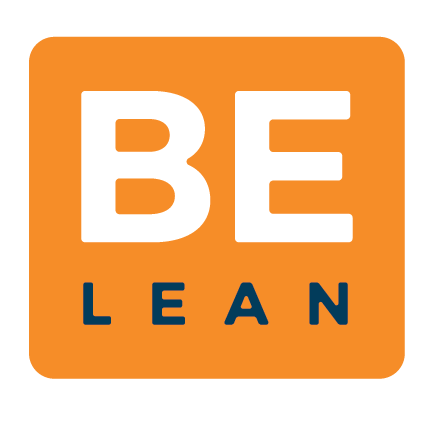How Quickbase outperformed a $300,000 app for 15% of the price
I’ve got a challenge for you. Can you count the number of systems, tools, and applications your company uses? If you’re like most businesses, it’s a lot.
My last company, greeNEWit, was no exception. In fact, I challenged myself to count the number of systems we used, and I got to 40 before I stopped counting. That’s more than one system for every employee in the company!
It was too much. Having so many disparate systems wasted time, money, and resources.
So we did something about it. We committed to improving our operating ecosystem, and over time, we eliminated, replaced, and integrated half of the systems that we used. This was the foundation of an operational transformation that resulted in:
Over $250,000 in savings
Sped up cash cycles by 50%
Reduced error rates from 7% of jobs to less than 1%
Allowed investments in growth without increases in overhead
So how’d we get there? Let me first tell you where we started.
Fast growth results in poor systems
greeNEWit started out as a residential energy efficiency contractor. People hired us to make their homes more comfortable and energy efficient. As with many services companies, our operations were pretty bare bones in the beginning. We collected data in the field on paper. We wrote our reports in Microsoft Word. We managed our projects on spreadsheets. Everything was done manually.
Before long, the business grew, and we expanded our service offerings to new market segments in multifamily housing and commercial buildings. We quickly grew from a team of 8 servicing several hundred homes per year to a team of 40 servicing over 60,000 residences and buildings per year. Paper and spreadsheets were simply not going to work anymore.
As most companies do, our systems adapted reactively to our needs at first. One project tracking spreadsheet became three sheets which became ten. We had so many spreadsheets that we needed another spreadsheet just to keep track of all of them.
We needed to step up our project management so that we could more easily track individual tasks and due dates, so we looked for an off the shelf solution and settled on Zoho Projects. When we needed a better way to manage our sales process, we tried out Zoho CRM.
The adaptations worked for us for a while. But they weren’t sustainable. As the company continued to grow in both volume and service offerings, our systems couldn’t keep up.
We couldn’t customize Zoho to the specific needs of our industry.
We used different systems for marketing, sales, and project management causing redundant data entry and opportunities for errors.
We didn’t have a centralized way of seeing what was going on in the company because our data was spread out across so many systems.
Our systems added to our workload at the very time when we needed them to create efficiencies. So we set out for a new solution.
We thought we could build the perfect solution from scratch
Ever the optimists, our founders saw an opportunity to develop a system of our own. A proprietary software that could meet all of the needs of our budding industry - digital data collection, automated reporting, scheduling, project management, and more. So they found an offshore development team to build our product, and development began.
We spent 4 years and over $300,000 developing and iterating our application. It did some incredible things. Digital data collection - check. Automated report generation - check. Automated rebate application submission - check.
But it still didn’t meet our needs. It was slow. It was clunky. It cost a fortune to maintain. And it still didn’t integrate with our other systems or allow us to effectively manage projects and customer relationships.
It became apparent that in order for it to do all of those things, we were going to have to completely redevelop it from scratch. We had to pull the plug.
We still needed a solution. Fortunately, we found Quickbase.
Quickbase is a low-code application development platform that lets businesses create completely custom solutions with very little or even no coding required. We decided to give it a shot, and I set out to create a brand new CRM for greeNEWit.
3 months later, for less than $10,000, we had a working application that was better than anything we had tried before. It was clear Quickbase would be our future.
“Brad was the driving force in making our business profitable. His research and analytical skills are surpassed only by his strategic design and implementation of system improvements. He’s extremely good at what he does and our business would not have made it past the startup phase without him.”
Over time, I built out additional functionality in our Quickbase application.
I integrated our website forms and scheduling software with Quickbase to automate our lead capture and appointment setting
I added project management and task tracking functionality
I added invoicing and expense tracking into the app and integrated it with QuickBooks to cut out hours of manual bookkeeping time each week
I integrated Quickbase with GMail to send out automated, personalized marketing messages to our customers that didn’t get trapped in Spam filters
And we finally had a centralized source of operating data that I used to measure our performance like never before, leading to data-driven decisions that saved hundreds of thousands of dollars.
Screenshots from greeNEWit’s Quickbase app
It’s hard to describe just how significant Quickbase was to greeNEWit’s operations. Quite frankly, it saved the business at times when the road was rockiest. And compared to our proprietary software, we built it in 20% of the time for 15% of the cost.
If like greeNEWit, spreadsheets or off the shelf tools simply aren’t cutting it for your business, it’s time to consider a custom solution. With tools like Quickbase, custom solutions aren’t just for the big guys any more.



